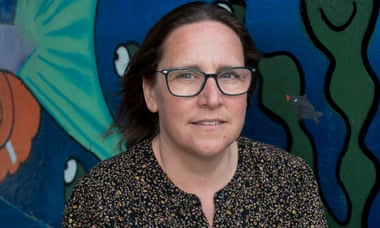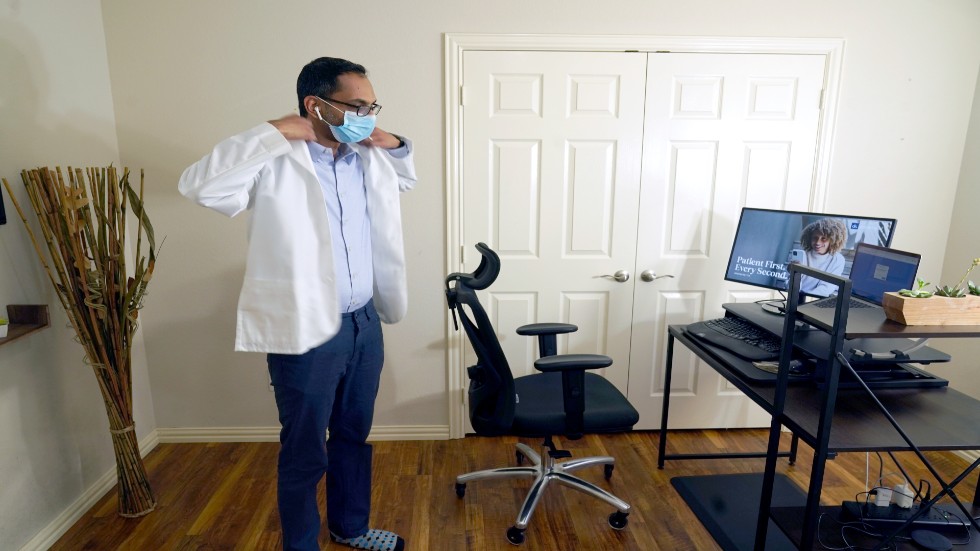[ad_1]
Lindsey Smith’s son was 14 when he bought his first vape. Engrossed in videos of YouTubers making “ghost puffs” with the vapour, he decided he wanted to try it for himself.
At first he would spend hours trying to copy the strangers online – sitting in his bedroom and practising exhalation techniques to create the ghost-shaped clouds he was seeing on his screen.
While he started out using watermelon-flavoured vapes with 2% nicotine, purchased from an older boy at school with his £5-a-week pocket money, his friends had obtained illegal devices with up to 12.5% nicotine – more than six times above the legal limit.
“He started trying stronger and stronger stuff to get a bit of a buzz,” said Smith, 42, an exam developer from Cramlington, Northumberland. “Where before he had obsessions like playing Minecraft, now it’s vaping.”
Smith is one of many parents across the UK alarmed at how vaping has quietly gained popularity among children, with few warnings of the risk of an epidemic from health officials or government.
Despite it being illegal to sell the devices to under-18s, research indicates a steep rise in underage vaping over the last five years, with the proportion of 16- to 18-year-olds who say they use e-cigarettes doubling in the past 12 months alone, according to Action on Smoking and Health .
Last weekend the Observer revealed how Elf Bar, one of the leading brands of disposable vapes, was apparently flouting rules to promote its products to young people on the social media app TikTok.
Now child respiratory doctors have criticised the government for failing to heed warnings about the risks of allowing e-cigarettes to be sold in child-friendly packaging containing the names of popular sweet treats – including banana milkshake and jelly babies, both of which products contain 2% nicotine, the highest concentration allowed in the UK.
Prof Andrew Bush, a consultant paediatric chest physician at Royal Brompton and Harefield hospitals, said: “I am concerned that we are sleepwalking into a public health catastrophe with a generation of children hooked on nicotine.”
There are concerns about the long-term health effects of vaping and that many of the products on sale in the UK are illicit and may contain banned chemicals or super-strength nicotine.

When Smith discovered her son’s habit, she tried to crack down on it. She confiscated the vapes containing nicotine and, as a compromise, said he could have nicotine-free ones, which would allow him to keep practising his vapour tricks without the addictive chemicals.
She thought he would get bored with it, but within weeks he was drawn back to vaping. Eight months on, he has tried vapes containing THC – tetrahydrocannabinol, the main psychoactive component of cannabis – and the synthetic cannabinoid Spice, and has begun smoking cigarettes, also obtained via classmates. “As a parent, if I wasn’t in this situation, I’d say: ‘Just say no, put your foot down.’ But it isn’t that easy,” she said.
Three hundred miles away in Dursley, Gloucestershire, Sharon Carter, 47, is facing a similar dilemma. Her son first tried vaping when he was 11, three weeks after starting secondary school, after being “offered a puff” by an older child. She later discovered he and his friends were hiding vaping products in a carrier bag stashed in a bush that they would retrieve each afternoon on the walk home from school.
Now 12, he has since been caught puffing on a vape by a teacher outside the school gates and trying to use a blueberry-flavoured one secretly in his bedroom. “I walked in not long after and could smell it. He tried to pass it off as bubblegum. I searched his room and found it and told him off,” said Carter, an export specialist.
The mother of two has tried cutting off his pocket money and now picks him up inside the school premises rather than letting him walk home. But her efforts so far have been futile. “I’ve done everything I can but I just feel totally helpless,” she said. “He loves running and football and he’s very athletic, so I said: ‘You could be jeopardising what you love the most,’ but he just shrugs.”
“It seems like the manufacturers are designing them with young people in mind,” she added. “When you smell a cigarette it’s like ‘eurgh,’ but the smells and flavours of vapes are so appealing. It’s like alcopops all over again.”
A father from London, who asked not to be named, mirrored her concerns. His asthmatic 16-year-old daughter began vaping during her GCSEs to help her “calm down”, and is now vaping “the equivalent of two packets of cigarettes per day”, he said. “She said, ‘This one changes colour, and this one has a monkey on it. They’re so sick,” he said. “This is truly an epidemic among our teenage children.”
Another parent said one of her teenage twin girls began vaping at 12, and that her son started at 14. “He buys them easily from the local shop, but no one seems to care because it’s not tobacco. Meanwhile loads of kids are getting hooked on nicotine and the cigarette industry has a fresh pool of customers,” she said.
For years ministers have been keen to promote vapes because “they carry a fraction of the risk of smoking” and consider they can play a key role in reducing the 78,000 people killed each year in the UK by smoking.
But there is growing alarm among teachers, medical experts and trading standards officials that vapes are too easily available to children. They say that the devices should be a “quit tool”, not a “cool tool”, and are calling for tighter controls to ensure vapes are only used as a smoking-cessation product.
Sarah Brown, a lecturer and consultant in paediatric respiratory medicine, said: “The medical profession was hoodwinked by the tobacco industry years ago and endorsed cigarettes and we are now endorsing vaping. As a colleague of mine has said: ‘Fool me once, shame on you. Fool me twice, shame on me.’”
She added: “The brains of children and young people are wired differently from adults’, so they get addicted to nicotine much faster than an adult. It’s a big concern.” Brown also said that the longterm effects of vaping were still largely unknown.

While e-cigarettes are considered a significantly safer alternative to tobacco, they are still potentially dangerous to health. A report published in the American Journal of Preventive Medicine in December 2019 found e-cigarette use significantly increased a person’s risk of developing chronic lung diseases such as asthma, bronchitis and emphysema
Jonathan Grigg, a professor of paediatric respiratory and environmental medicine, was a co-author of a paper in the Archives of Disease in Childhood in November 2018 that warned there was a risk that thousands of children would become addicted to nicotine because of the “complacency” of government health officials in the UK.
He said: “We saw this coming and were ignored. The trajectory was obvious.”
A review by former Barnardo’s chief executive Javed Khan into the government’s ambition to make England smoke-free by 2030 said vaping needed to be promoted to reduce smoking, but the government should do “everything they possibly can” to prevent young people from vaping, “including by banning child-friendly packaging and descriptions”.
A Department of Health and Social Care spokesperson said the UK had “some of the strongest regulations in place on vapes to protect children and young people” and was considering further measures: “We are clear that vaping should only be used to help people quit smoking – vapes should not be used by children, young people or non-smokers.”
After a community callout last week, the Observer was contacted by more than 50 families from across the country sharing their experiences about youth vaping.
While most were from parents desperate to stop their children from vaping, others were more nuanced. One mother said that since taking up vaping, her teenage daughter appeared to have stopped self-harming. Another said her teenager claimed that e-cigarettes had helped him manage his stress and anger, which have previously triggered a debilitating medical condition. Others said they saw vaping as “the lesser of the evils” and that they would prefer their child to be vaping than smoking, drinking or taking drugs.
But all said they would rather their children were not using vapes at all.
Maria King, 47, a mother of two from Eastbourne, East Sussex, believes it is a matter of urgency that regulation is strengthened – and existing advertising rules enforced – to prevent more children taking up vaping.
Her own son started vaping at the age of 13 after being around friends doing it during the summer holidays and watching videos on TikTok showing vapers “blowing funny smoke rings”. She said the habit made him “irrational” and “agitated”, and “changed the family dynamic”. She added: “From a household where we’d play games on a Friday night, he’d go and sit in his room alone.”
But King, a business owner, said her son, now 14, was “very honest” with her about his use of vapes and that she has now been able to wean him off by using lower-strength nicotine products.
She has started a petition calling on the government to clamp down on companies that, she says, are directly targeting children. “What we’re seeing as parents is that the way they look – Slush Puppie, Skittles, Fanta lookalikes – is not marketing to 18-plus-year-old current smokers,” she said.
She added: “We can’t lock our children up and shouldn’t have to. Those making these products so appealing and readily available need to be made to stop.”
Additional reporting: Alfie Packham
[ad_2]
Source link


